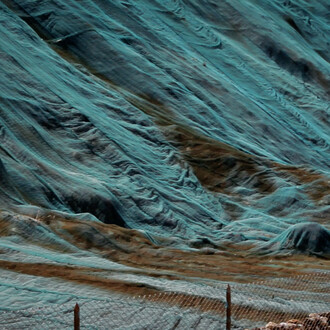MIT List Visual Arts Center is pleased to announce List projects 31: Kite, an exhibition of the multidisciplinary artist’s exploration into machine learning, artificial intelligence, and dream interpretation as means of expressing Oglála Lakȟóta ontology and epistemology. For over a decade, Kite has worked with digital interfaces for music and live performance while developing scholarship on what she calls “Indigenous protocols for AI”. Her musical compositions, installations, graphical scores, videos, and live performances often visualize the artist’s collaborations with human and nonhuman entities, like stones and the components of computers, and reveal her intricate process of investigation and iteration. Focused on scores and performances realized over the past five years, the exhibition features seven artworks, including an immersive video installation, on view in the Bakalar Gallery January 30—May 18, 2025. On April 17, 2025, Kite will activate the exhibition’s central work, Wičháȟpi wóihaŋbleya (dreamlike star)—a room-scaled environment with video, sculpture, text, and sound—through a live solo performance in the gallery space. With this exhibition, MIT List Visual Arts Center’s Selby Nimrod, Assistant Curator, and Zach Ngin, Curatorial Assistant, celebrate the singular progression of Kite’s adaptive practice, one in which she perpetually welcomes “new methods, new collaborators, new media, and new ways of thinking—displaying a unique ability to surpass the limitations of artistic, musical, and academic disciplines through embracing elasticity and invention and working nimbly while engaging respectfully with collaborators, communities, and the unknown”.
In recent years, Kite has turned to dreams as both an ancestral technology and a material for artmaking. In stone sculptures, embroidered deer hides, performances, and a participatory web project, Kite translates her dreams (and those of others) into a Lakȟóta visual language that has been stewarded by Lakȟóta women and two-spirit people. The artist then employs this semiotic vocabulary to create abstract scores for musicians to interpret. Acts of mediation and translation are fundamental to Kite’s work, and her List Center exhibition brings key aspects of her performance and composition practice—listening, translation, iteration, and relation—into focus. Scores of dreams recorded in the chiastic geometry of the Lakȟóta visual language are reproduced at large scale and accompanied by video and audio documentation of performances by the artist and her collaborators.
Emphasizing the breadth of Kite’s performance and composition practice, the exhibition showcases four videos documenting both individual performances and collaborative performances with Santee Witt, three instructional and illustrated scores reproduced as wall works, and audio of a musical composition performed by the Silkroad Ensemble. The show’s centerpiece, Wičháȟpi wóihaŋbleya (dreamlike star) (2023–25), is an installation with sculpture, video, and sound. A hallucinatory environment of doubles and reflections Wičháȟpi Wóihaŋbleya features a score composed from Lakȟóta visual language translations of the artist’s dreams realized as a constellation of stones on a reflective floor. Behind them, a large projection shows a vast network of stars littering a purple night sky.
The recurrence of imagery and objects (stones, stars, and shapes) in the projected video, in its reflection in the mirrored floor, and in the sculpture itself evokes a vast and interconnected universe: earth and sky are entangled in what Kite has called an “ancient and future dance.” Here and throughout Kite’s work, antinomies of dreaming and waking, land and sky, human and nonhuman are brought into forms of ethical and reciprocal relationship specific to the Lakȟóta people. Wičháȟpi wóihaŋbleya (dreamlike star) also illustrates Kite’s iterative and collaborative method. In addition the installation, it encompasses a performance, a poem, written instructions for musicians, and sheet music for a full symphony orchestra. Its gallery installation doubles as the stage of Kite’s solo performance of the same title, a corporeal interpretation of the score that merges wearable technology and choreography by Muscogee artist Olivia Camfield.
Approaching advanced technology, dreamed visions, and natural elements as equally meaningful measures of societal and cultural wisdom, Kite unifies her creative methodology by considering how all beings—human, nonhuman, psychic, and cosmic—can be understood through the Lakȟóta philosophy of the Good Way, which she describes in her influential essay How to build anything ethically as a “decision-making process [that], as with many Indigenous decision-making processes, embed ethics that look Seven Generations ahead.” Adopting this ancestral foresight, she strives to innovate technology not as a means of critique but to challenge creative and scientific fields to engineer machines in a way that reinforces a respectful exchange between humans and the earth—rooted in reciprocity rather than exploitation. By infusing technological, spiritual, and ecological vocabularies, Kite encourages us to imagine how dreams might be utilized as a research-creation methodology—building systems sensitive and responsive to future generations.














